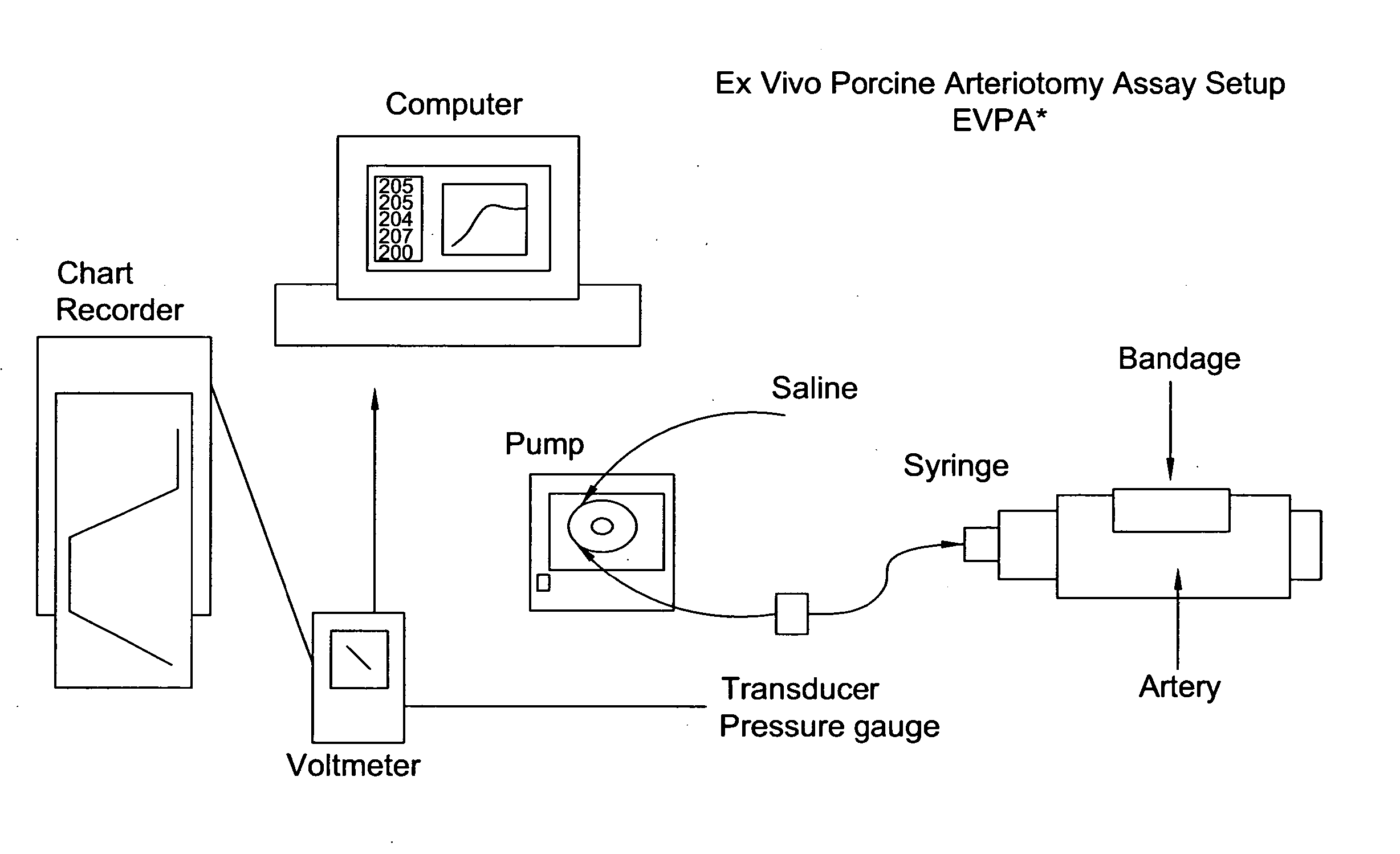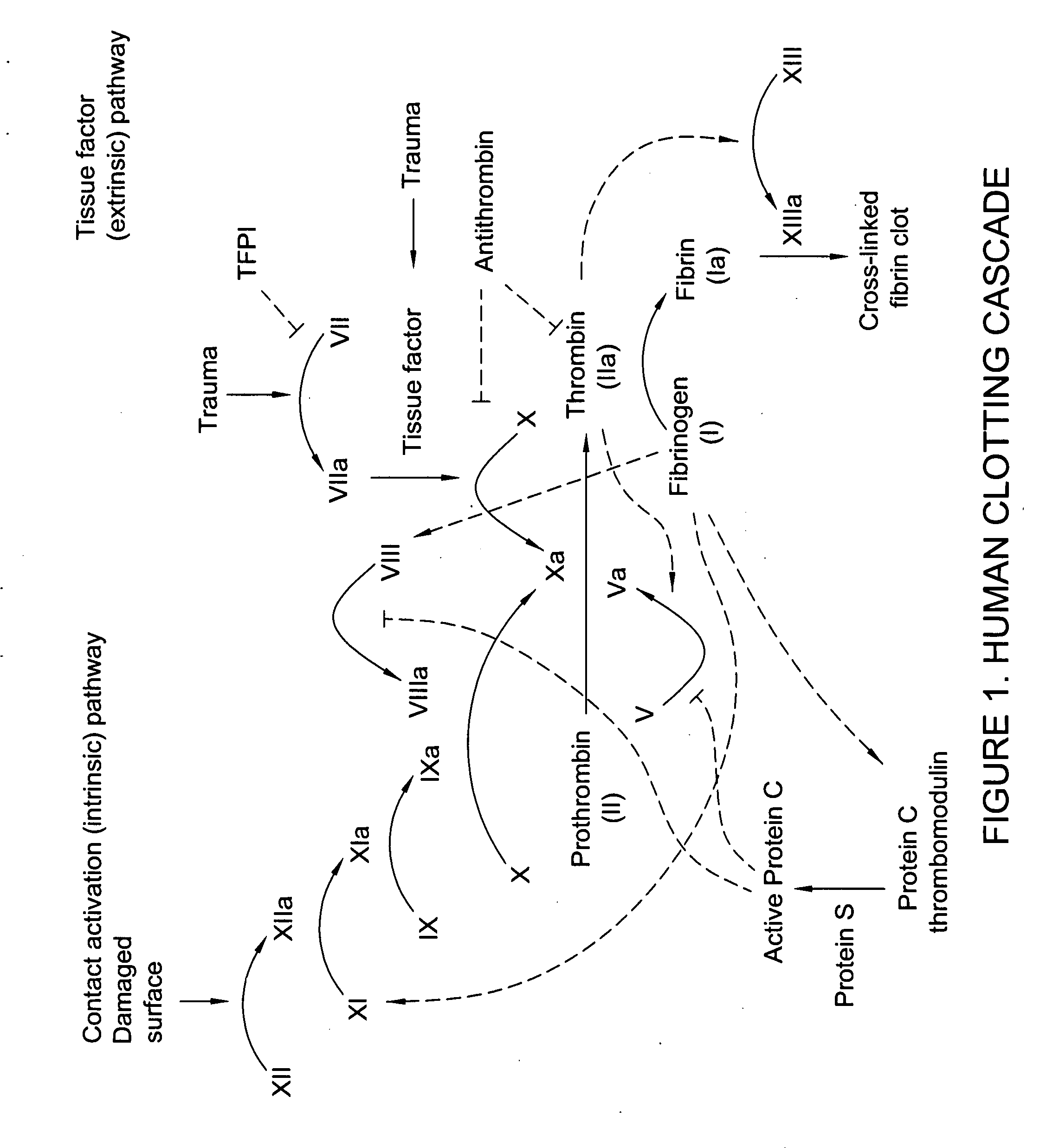Processes for the production of solid dressings for treating wounded tissue
solid dressings, which is applied in the direction of drug compositions, peptide/protein ingredients, extracellular fluid disorder, etc., can solve the problems of unsatisfactory change in material and method available to stop bleeding in pre-hospital care (gauze dressings, direct pressure, tourniquets), unsatisfactory improvement, and inability to achieve uniform effect, etc., to reduce the moisture content of frozen aqueous mixture, inhibit fibrinogen activation, and reduce the temperature of a a production process of wound tissue production and production of solid dressings and wound tissue production and production of solid dressings and wound tissue production and production of solid dressings and wound tissue production and production of solid dressings and wound tissue production and production process of wound tissue and wound tissue production and production process wound tissue technology, which is applied in the field of solid dressings, which is applied in the field of wounds, and achieves the effect of wounds and wounds a technology for wound tissue production and production process, a technology for wound tissue and wound tissue production and production process, a technology for wound tissue and wound tissue production and production
- Summary
- Abstract
- Description
- Claims
- Application Information
AI Technical Summary
Benefits of technology
Problems solved by technology
Method used
Image
Examples
example 1
[0146] Backing material (DEXON™) was cut and placed into each PETG 2.4×2.4 cm mold. Twenty-five microliters of 2% sucrose was pipetted on top of each of the four corners of the backing material. Once completed the molds were placed in a −80° C. freezer for at least 60 minutes. Fibrinogen (Enzyme Research Laboratories™) was formulated in CFB. The final pH of the fibrinogen was 7.4±0.1. The fibrinogen concentrations were adjusted to 37.5, 31.7, 25.9, 20.16, 14.4, 8.64, and 4.3 mg / ml. When 2 ml of fibrinogen was delivered into the molds, this would result in a fibrinogen dose of 13, 11, 9, 7, 5, 3 or 1.5 mg / cm2. Once prepared the fibrinogen was placed on ice until use. Thrombin was formulated in CTB. The final pH of the thrombin was 7.4±0.1. The concentrations of thrombin were adjusted so that when mixed with the fibrinogen solutions as described below, the combination would produce a solution that contained 0.1 units / mg of Fibrinogen. Once prepared the thrombin was placed on ice until...
example 2
[0149] Monolithic dressings were manufactured as follows: backing material was cut and placed into each PETG 2.4×2.4 cm mold. Twenty-five microliters of 2% sucrose was pipetted on top of each of the four corners of the backing material. Once completed the molds were placed in a −80° C. freezer for at least 60 minutes.
[0150] For all dressings, ERL fibrinogen lot 3114 was formulated in CFB. The final pH of the fibrinogen was 7.4±0.1. The fibrinogen concentration was adjusted to 37.5 mg / ml. Once prepared the fibrinogen was placed on ice until use. Thrombin was formulated in CTB. The final pH of the thrombin was 7.4±0.1. The thrombin was adjusted to deliver 0.1 units / mg of Fibrinogen or 25 Units / ml thrombin. Once prepared the thrombin was placed on ice until use. The temperature of the fibrinogen and thrombin prior to dispensing was 4° C.±2° C. Molds were removed from the −80° C. freezer and placed on a copper plate that was placed on top of dry ice. A repeat pipettor was filled with f...
example 3
[0158] For dressings utilizing a backing, the backing material was cut and placed into each PETG 2.4×2.4 cm mold. Twenty-five microliters of 2% sucrose was pipetted on top of each of the four corners of the backing material. Once completed the molds were placed in a −80° C. freezer for at least 60 minutes. For dressings without backing material, PETG 2.4×2.4 cm molds were placed in a −80° C. freezer for at least 60 minutes.
[0159] For all dressings, ERL fibrinogen lot 3114 was formulated in CFB. The final pH of the fibrinogen was 7.4±0.1. The fibrinogen concentration was adjusted to 37.5 mg / ml. Once prepared the fibrinogen was placed on ice until use. Thrombin was formulated in CTB. The final pH of the thrombin was 7.4±0.1. The thrombin was adjusted to deliver 0.1 units / mg of Fibrinogen or 25 Units / ml thrombin. Once prepared the thrombin was placed on ice until use. The temperature of the fibrinogen and thrombin prior to dispensing was 4° C.±2° C. Molds were removed from the −80° C....
PUM
| Property | Measurement | Unit |
|---|---|---|
| temperature | aaaaa | aaaaa |
| temperatures | aaaaa | aaaaa |
| temperatures | aaaaa | aaaaa |
Abstract
Description
Claims
Application Information
 Login to View More
Login to View More - R&D
- Intellectual Property
- Life Sciences
- Materials
- Tech Scout
- Unparalleled Data Quality
- Higher Quality Content
- 60% Fewer Hallucinations
Browse by: Latest US Patents, China's latest patents, Technical Efficacy Thesaurus, Application Domain, Technology Topic, Popular Technical Reports.
© 2025 PatSnap. All rights reserved.Legal|Privacy policy|Modern Slavery Act Transparency Statement|Sitemap|About US| Contact US: help@patsnap.com



